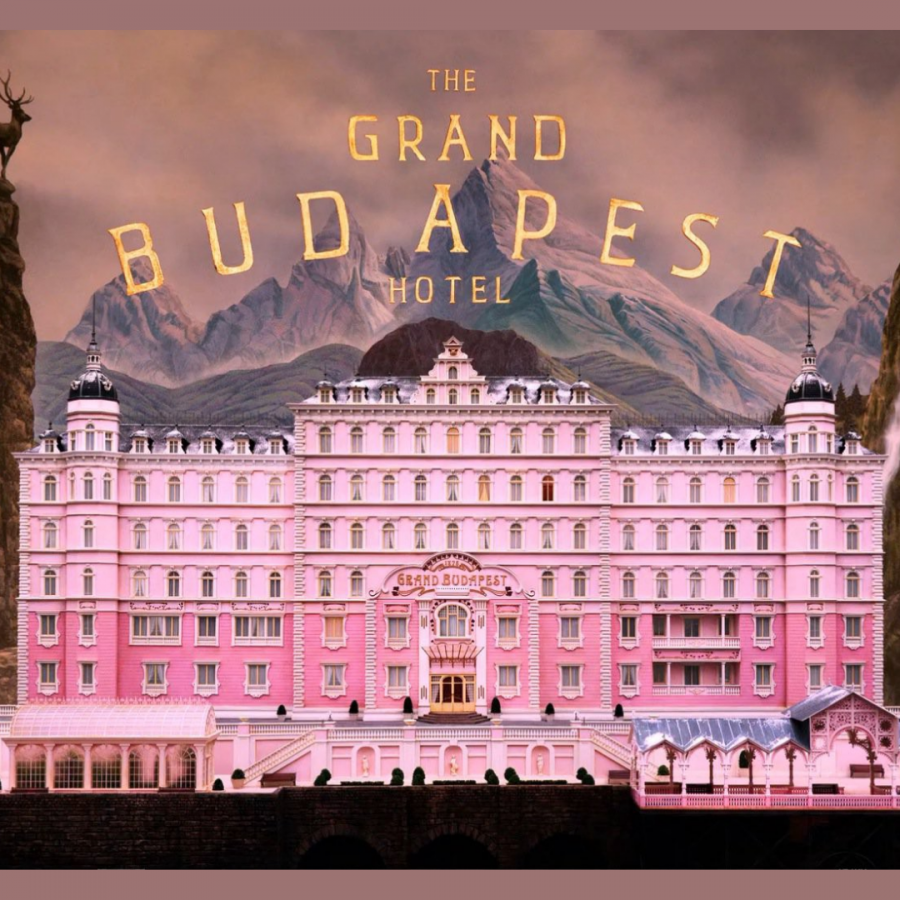GUEST: ‘The Grand Budapest Hotel’ delivers excitement and uniqueness
Our Guest film reviews are a collaboration with Billy Kaskay’s Ethics and Culture in Film elective.
The Grand Budapest Hotel is a 2014 film directed by Wes Anderson. This quirky and visually exciting comedy-drama, follows a writer interviewing the current hotel owner and the story behind how he acquired the once magnificent hotel. Throughout the film’s 100 minute run time, the main characters meet eccentric characters, run into fascist regimes, escape prison, and explore themes of friendship and loyalty.
The film opens with the author visiting The Grand Budapest Hotel, which has lost it’s “grand-ness”. While there, the author meets the current owner, Zero Moustafa, who invites him to dinner to discuss how he became the owner. In 1932, Zero is hired as a lobby boy in the hotel where he is taken under the wing of Monsieur Gustave, the hotel’s concierge. M. Gustave has many affairs with the wealthy women who stay at the hotel, one of them being the widow of the original owner, Madame D. Soon after her last visit, M. Gustave finds out through a newspaper article that she has died mysteriously. M. Gustave and Zero visit her estate to pay respects to her family, and while they are there they witness her will being read. In the will, Madame D. leaves M. Gustave the most valuable painting in her entire estate, “Boy with Apple”. Madame D’s son, Dmitri, is furious because he absolutely hates M. Gustave, and later accuses him of his mothers death. Once M. Gustave and Zero arrive back at the hotel, the police are waiting for them and arrest M. Gustave. The rest of the film follows M. Gustave’s attempt to escape prison, an assassin hired by Dmitri sent to kill M. Gustave and his associates, a fascist regime taking over the hotel, and Zero smuggling the artwork and attempting to clear M. Gustave’s name. This elaborate movie utilizes many unique artistic choices including the use of Russian folk music, symmetrical shot compositions, vibrant colors, ornate miniatures that are used as exteriors, and changing aspect ratios.
The Grand Budapest Hotel is a quirky, unique film that remains interesting until the final shot. Possibly Wes Anderson’s most extravagant film, The Grand Budapest Hotel’s intense colors and unique shots, ornate costumes and interiors, combined with his transitions, makes this film the opposite of dull. The music definitely fits in with the fictional setting of Zubrowka, and provides an East European atmosphere. The acting from the characters is great, although some of them seem devoid of personality, which I’m sure was intentional on Mr. Anderson’s part, seeing how many characters in his previous movies act this way as well. On the other hand, characters like M. Gustave are full of unique and charismatic personalities, and make up for any of the other characters who are lacking in that department. Another critique I have is that sometimes the dialogue can fall flat and feel forced in the less exciting scenes, but that can be overlooked. The directors purpose of commemorating the 1930’s and the messages of friendship and loyalty are achieved through the use of nostalgic colors and architecture, the characters, the acting, and the dialogue.
The Grand Budapest Hotel is an absolute visual masterpiece with some of the most exciting and artistic shots I have ever seen in a movie. This film is dripping with atmosphere and the ensemble cast tells the story in a unique and charming way. At the end of the day, even without the visuals and other artistic embellishments, The Grand Budapest Hotel is a beautiful story about friendship and staying loyal to the ones who have your back. ★★★★✰







